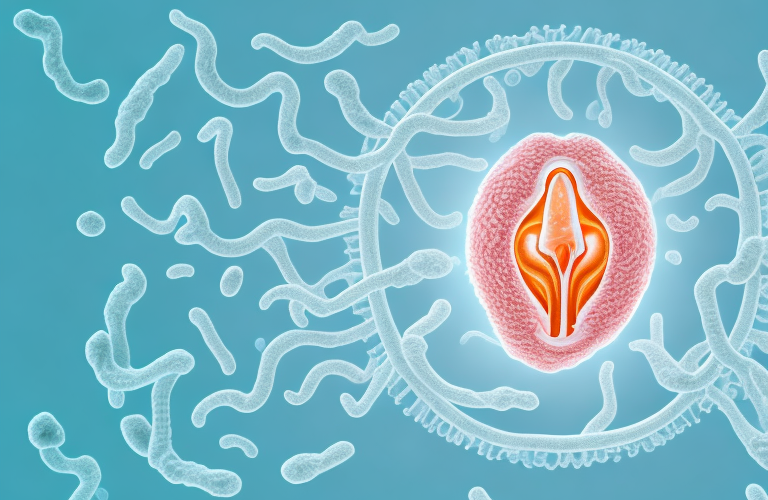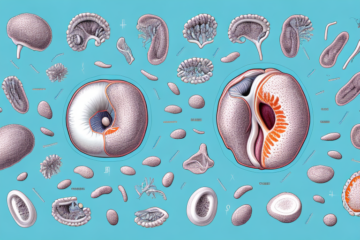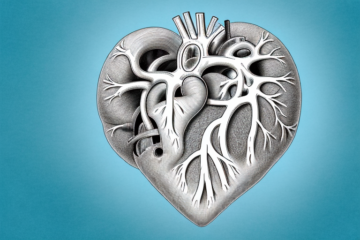Bacterial vaginosis is a common vaginal infection that affects many women worldwide. It is caused by an imbalance of the bacteria in the vagina, resulting in an overgrowth of harmful bacteria. This condition is not typically serious, but it can cause discomfort and lead to complications if left untreated. In this article, we will discuss in detail what bacterial vaginosis is, its causes and symptoms, diagnosis and treatment options, and how to prevent its recurrence.
What is bacterial vaginosis?
Bacterial vaginosis is a vaginal infection that occurs due to an overgrowth of harmful bacteria in the vagina. It is the most common type of vaginal infection in women of childbearing age. The condition is not considered a sexually transmitted infection, although it does increase the risk of contracting other sexually transmitted infections.The vagina naturally contains a combination of good and bad bacteria that work together to maintain a healthy balance. When the number of harmful bacteria increases, it can lead to bacterial vaginosis. The condition is not always noticeable, but when symptoms do occur, they can cause discomfort and affect a woman’s quality of life.
There are several risk factors that can increase a woman’s chances of developing bacterial vaginosis. These include douching, using scented products in the vaginal area, having multiple sexual partners, and not using condoms during sexual activity. Additionally, women who have recently undergone a gynecological procedure, such as a hysterectomy or an abortion, may also be at an increased risk of developing bacterial vaginosis.If left untreated, bacterial vaginosis can lead to more serious health complications. For example, it can increase a woman’s risk of developing pelvic inflammatory disease, which can cause infertility. It can also increase the risk of preterm labor and delivery in pregnant women. Therefore, it is important for women to seek medical treatment if they suspect they may have bacterial vaginosis. Treatment typically involves antibiotics, which can help to restore the balance of bacteria in the vagina and alleviate symptoms.
Understanding the causes of bacterial vaginosis
The exact cause of bacterial vaginosis is not known. However, several factors can increase the risk of developing the condition. One of the most common causes of bacterial vaginosis is a change in the balance of bacteria in the vagina. This can occur due to a variety of reasons, including:
- Douching or using scented products on the vagina
- Having multiple sexual partners
- Using antibiotics
- Having a weakened immune system
- Wearing tight or synthetic clothing
In addition to the above factors, recent studies have also suggested that smoking may increase the risk of developing bacterial vaginosis. Nicotine and other chemicals in cigarettes can disrupt the natural balance of bacteria in the vagina, leading to an overgrowth of harmful bacteria. Therefore, quitting smoking may not only improve overall health but also reduce the risk of developing bacterial vaginosis.
Who is at risk of developing bacterial vaginosis?
Bacterial vaginosis can affect any woman who has reached puberty, but several factors can increase the risk of developing the condition. These include:
- Being sexually active
- Using contraception
- Having a sexually transmitted infection
- Pregnancy
- Smoking
- Using douches or vaginal deodorants
Additionally, women who have multiple sexual partners or have a new sexual partner may also be at a higher risk of developing bacterial vaginosis. It is important to note that while bacterial vaginosis is not considered a sexually transmitted infection, it can be triggered by sexual activity and can increase the risk of contracting other sexually transmitted infections. Therefore, practicing safe sex and maintaining good vaginal hygiene can help reduce the risk of developing bacterial vaginosis.
Symptoms of bacterial vaginosis you need to know
Many women with bacterial vaginosis do not have any symptoms, while others may experience:
- A strong fishy odor, especially after sex
- A white or gray vaginal discharge
- Itching and burning around the vagina
- Pain or discomfort during sex
It is important to note that bacterial vaginosis can increase the risk of developing other sexually transmitted infections (STIs) such as chlamydia, gonorrhea, and HIV. It can also increase the risk of complications during pregnancy, such as premature birth and low birth weight. Therefore, it is crucial to seek medical attention if you suspect you may have bacterial vaginosis or any other STI. Early diagnosis and treatment can prevent further complications and improve overall health outcomes.
How to diagnose bacterial vaginosis: Tests and procedures
A doctor will typically diagnose bacterial vaginosis by performing a physical examination and taking a sample of the vaginal discharge for testing. There are several tests that can be used to diagnose bacterial vaginosis, including:
- A wet mount test – a sample of vaginal discharge is examined under a microscope
- A pH test – a sample is checked for acidity
- A whiff test – a sample of discharge is mixed with potassium hydroxide and checked for a fishy odor
In addition to these tests, a doctor may also perform a culture test to identify the specific bacteria causing the infection. This test involves taking a sample of the vaginal discharge and growing it in a laboratory to identify the bacteria present. It is important to accurately diagnose bacterial vaginosis in order to receive proper treatment and prevent complications such as pelvic inflammatory disease. If you suspect you may have bacterial vaginosis, it is important to schedule an appointment with your healthcare provider for an accurate diagnosis and treatment plan.
Bacterial vaginosis and pregnancy: What you should know
Bacterial vaginosis during pregnancy can increase the risk of preterm labor, premature rupture of membranes, and low birth weight. Pregnant women with bacterial vaginosis should receive prompt treatment to reduce these risks.
It is important to note that bacterial vaginosis is not a sexually transmitted infection, but rather an imbalance of the natural bacteria in the vagina. However, having multiple sexual partners or douching can increase the risk of developing bacterial vaginosis. Pregnant women should avoid these behaviors and practice good hygiene to reduce their risk of developing bacterial vaginosis during pregnancy. If you experience any symptoms such as unusual discharge or odor, it is important to speak with your healthcare provider for proper diagnosis and treatment.
Complications of untreated bacterial vaginosis
Although bacterial vaginosis is not typically serious, if left untreated, it can lead to complications such as:
- Pelvic inflammatory disease
- Increased risk of sexually transmitted infections including HIV
- Miscarriage or premature delivery during pregnancy
In addition to the above complications, untreated bacterial vaginosis can also lead to chronic pelvic pain. This pain can be severe and persistent, and may require medical intervention to manage.Furthermore, untreated bacterial vaginosis can also increase the risk of developing other infections, such as urinary tract infections. This is because the imbalance of bacteria in the vagina can spread to other parts of the urinary tract, leading to infection and discomfort. It is important to seek medical attention if you suspect you may have bacterial vaginosis, in order to prevent these potential complications.
Treatment options for bacterial vaginosis: Antibiotics, home remedies, and more
Bacterial vaginosis is typically treated with antibiotics, but home remedies and lifestyle changes may also help manage symptoms and reduce the risk of recurrence. Antibiotic medications are usually taken orally or inserted into the vagina. It is important to take the full course of antibiotics as prescribed by a doctor, even if symptoms improve.In addition to antibiotics, home remedies and lifestyle changes can help manage symptoms and reduce the risk of recurrence. These include:
- Wearing breathable cotton underwear and loose-fitting clothing
- Avoiding scented products and douching
- Eating a healthy diet and staying hydrated
- Practicing safe sex and reducing the number of sexual partners
It is important to note that while home remedies and lifestyle changes may help manage symptoms, they are not a substitute for antibiotics in treating bacterial vaginosis. It is always recommended to consult with a healthcare provider for proper diagnosis and treatment. Additionally, if left untreated, bacterial vaginosis can lead to more serious health complications, such as pelvic inflammatory disease and increased risk of sexually transmitted infections. Therefore, it is crucial to seek medical attention if experiencing symptoms of bacterial vaginosis.
How to prevent the recurrence of bacterial vaginosis
Unfortunately, bacterial vaginosis can recur even after treatment. However, there are several steps a woman can take to reduce the risk of recurrence, including:
- Practicing good hygiene habits
- Using condoms during sex
- Avoiding douching and scented products
- Wearing breathable cotton underwear
- Eating a healthy diet and staying hydrated
It is also important to note that some women may be more prone to recurrent bacterial vaginosis due to factors such as hormonal changes, stress, or a weakened immune system. In these cases, it may be helpful to speak with a healthcare provider about additional preventative measures or treatment options. Additionally, it is recommended to attend regular gynecological check-ups to monitor and address any potential issues. By taking these steps, women can reduce the likelihood of bacterial vaginosis recurrence and maintain optimal vaginal health.
Lifestyle changes that can help manage bacterial vaginosis symptoms
In addition to medications, lifestyle changes can also help reduce the symptoms of bacterial vaginosis. These include:
- Reducing stress levels
- Eating a healthy diet rich in probiotics
- Exercising regularly
- Getting enough sleep
Another lifestyle change that can help manage bacterial vaginosis symptoms is avoiding douching. Douching can disrupt the natural balance of bacteria in the vagina and lead to an overgrowth of harmful bacteria.
It is also important to avoid using scented products in the genital area, such as scented soaps or bubble baths. These products can irritate the vagina and lead to an increased risk of bacterial vaginosis.
When to see a doctor if you suspect bacterial vaginosis
If you think you may have bacterial vaginosis, it is important to see a doctor for diagnosis and treatment. Untreated bacterial vaginosis can lead to complications, so prompt treatment is necessary.
In addition to seeking medical attention as soon as possible, there are a few other things you can do to help manage bacterial vaginosis. One of the most important steps is to practice good hygiene, including washing your genital area with mild soap and water daily. You should also avoid using scented products, such as perfumed soaps or bubble baths, which can irritate the vagina and make symptoms worse.Another important factor to consider is your sexual health. If you are sexually active, it is important to use protection, such as condoms, to reduce your risk of developing bacterial vaginosis. Additionally, it is recommended that you avoid douching, as this can disrupt the natural balance of bacteria in the vagina and increase your risk of infection. By taking these steps and seeking prompt medical attention, you can help manage bacterial vaginosis and reduce your risk of complications.
Myths and misconceptions about bacterial vaginosis
There are several myths and misconceptions about bacterial vaginosis. Some of these include:
- Bacterial vaginosis is a sexually transmitted infection – While having multiple sexual partners can increase the risk of developing bacterial vaginosis, it is not considered a sexually transmitted infection.
- Bacterial vaginosis is caused by poor hygiene – While good hygiene habits can help prevent bacterial vaginosis, it is not caused by poor hygiene.
- Bacterial vaginosis is always noticeable – Many women with bacterial vaginosis do not have any symptoms.
However, there are other factors that can increase the risk of developing bacterial vaginosis. These include the use of certain antibiotics, douching, and hormonal changes during pregnancy or menopause.It is important to note that bacterial vaginosis can increase the risk of other health issues, such as pelvic inflammatory disease and sexually transmitted infections. Therefore, it is important to seek medical attention if you suspect you may have bacterial vaginosis or are experiencing any unusual symptoms.
Bacterial vaginosis vs yeast infection: Know the difference
Bacterial vaginosis is often confused with a yeast infection, but they are two different conditions. Yeast infections are caused by an overgrowth of yeast in the vagina and are typically characterized by itching, burning, and vaginal discharge. While bacterial vaginosis may cause similar symptoms, the discharge is usually thinner and has a fishy odor, while yeast infection discharge is thick and white.
It is important to note that bacterial vaginosis is not a sexually transmitted infection, while yeast infections can be passed between sexual partners. Additionally, bacterial vaginosis is more common in women who have multiple sexual partners or who douche regularly, while yeast infections can occur in any woman regardless of sexual activity. If you are experiencing symptoms of either condition, it is important to see a healthcare provider for proper diagnosis and treatment.
The link between sexually transmitted infections and bacterial vaginosis
While bacterial vaginosis is not considered a sexually transmitted infection, it can increase the risk of contracting other sexually transmitted infections, including HIV. It is essential to practice safe sex and reduce the number of sexual partners to reduce this risk.
Additionally, bacterial vaginosis can also lead to complications during pregnancy, such as premature birth and low birth weight. Pregnant women who experience symptoms of bacterial vaginosis should seek medical attention promptly to prevent any potential harm to their unborn child.










